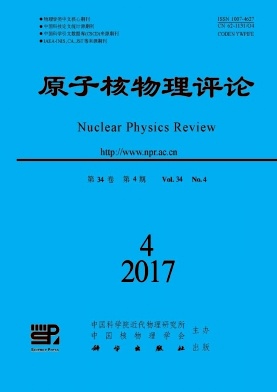|
[1]
|
CASTEN R F. Nuclear Structure From A Simple Perspective[M]. New York:Oxford University Press, 1990. |
|
[2]
|
BOHR A, MOTTELSON B R. Physica Scripta, 1974, 10:A13; Nuclear Structure[M]. Vol. Ⅱ. Singapore:World Scientific Publishing, 1998:41. |
|
[3]
|
FAESTERMANN T, GÓRSKA M, GRAWE H. Prog Part Nucl Phys, 2013, 69:85. |
|
[4]
|
MEYER R A, YAFFE R P. Phys Rev C, 1977, 15:390. |
|
[5]
|
FUKUCHI T, GONO Y, ODAHARA A, et al. Eur Phys J A, 2005, 24:249. |
|
[6]
|
HORI T, MASUE T, ODAHARA A, et al. Phys Rev C, 2009, 80:034306. |
|
[7]
|
PLETTNER C, GRAWEA H, MUKHA I, et al. Nucl Phys A, 2004, 733:20. |
|
[8]
|
MǍRGINEAN N, BUCURESCU D, ALVAREZ C ROSSI, et al. Phys Rev C, 2003, 67:061301(R). |
|
[9]
|
DÖRING J, GRAWE H, SCHMIDT K, et al. Phys Rev C, 2003, 68:034306. |
|
[10]
|
SINGH B S NARA, LIU Z, WADSWORTH R, et al. Phys Rev Lett, 2011, 107:172502. |
|
[11]
|
LORUSSO G, BECERRIL A, AMTHOR A, et al. Phys Lett B, 2011, 699:141. |
|
[12]
|
BROWN B A, LESSER P M S, FOSSAN D B. Phys Rev Lett, 1975, 34:161. |
|
[13]
|
BROWN B A, LESSER P M S, FOSSAN D B. Phys Rev C, 1976, 13:1900. |
|
[14]
|
GORSKA M, GRAWE H, FOLTESCU D, et al. Z Phys A, 1995, 353:233. |
|
[15]
|
COMMARA M LA, SCHMIDT K, GRAWEB H, et al. Nucl Phys A, 2002, 708:167. |
|
[16]
|
CHOWDHURY P, BROWN B A, GARG U, et al. Phys Rev C, 1985, 32:1238. |
|
[17]
|
BECERRIL A D, LORUSSO G, AMTHOR A M, et al. Phys Rev C, 2011, 84:041303(R). |
|
[18]
|
BOUTACHKOV P, GORSKA M, GRAWE H, et al. Phys Rev C, 2011, 84:044311. |
|
[19]
|
JONES G A, REGAN P H, WALKER P M, et al. Phy Rev C, 2007, 76:047303. |
|
[20]
|
SIMPSON G S, PINSTON J A, BALABANSKI D, et al. Phys Rev C, 2006, 74:064308. |
|
[21]
|
ENSDF. http://www.nndc.bnl.gov/ensdf/. |
|
[22]
|
HASEGAWA M, SUN Y, TAZAKI S, et al. Phys Lett B, 2011, 696:197. |
|
[23]
|
ZHANG Y H, HASEGAWA M, GUO W T, et al. Phys Rev C, 2009, 79:044316. |
|
[24]
|
GLOECKNER D H, SERDUKE F J D. Nucl Phys A, 1974, 220:477. |
|
[25]
|
GLOECKNER D H. Nucl Phys A, 1975, 253:301. |
|
[26]
|
SHARP D K, KAY B P, THOMAS J S, et al. Phys Rev C, 2013, 87:014312. |
|
[27]
|
GHUGRE S S, PATEL S B, GUPTA M, et al. Phys Rev C, 1994, 50:1346. |
|
[28]
|
GALINDO E, HAUSMANN M, JUNGCLAUS A, et al. Phys Rev C, 2004, 69:024304. |
|
[29]
|
ZHANG C H, WANG S J, GU J N. Phys Rev C, 1999, 60:054316. |
|
[30]
|
RAE W D M. NuShellX, http://www.garsington.eclipse.co.uk/. |
|
[31]
|
WANG Z G, LIU M L, ZHANG Y H, et al. Phys Rev C, 2014, 89:044308. |
|
[32]
|
BAYMAN B F, LANDE A. Nuclear Physics, 1966, 77:1. |
|
[33]
|
KHARRAJA B, GHUGRE S S, GARG U, et al. Phys Rev C, 1998, 57:83. |
|
[34]
|
BAGLIN C M. Nuclear Data Sheets, 2011, 112:1163. |






 甘公网安备 62010202000723号
甘公网安备 62010202000723号 DownLoad:
DownLoad: